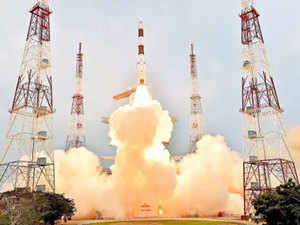Questions for 2020: India land a craft safely on moon? ISRO should manage peacefully
SOURCE : ET

In 1979, SLV-3, India’s first rocket plunged into the sea on its maiden launch. The rocket was an attempt to free the country from riding piggyback its satellites on European or US rocket missions. The next year, the SLV-3 hurled a 40-kg Rohini satellite into space to create history. Since then, the Indian Space Research Organisation (Isro) has learnt from its failures each time there is a setback with a successful follow-on mission.
Forty years on, India’s next generation rocket is the preferred vehicle for launching small satellites for countries across the world. Isro scientists lost communication in September with the Vikram lander of the Chandrayaan-2 mission some 400 m above the lunar surface. So what’s next? Isro has already planned to send a lander and a rover to the Moon in 2020.
The Chandrayaan-3 mission will not have an orbiter. Scientists at the Isro units will conduct a simulation of the entire lunar landing sequence of the spacecraft. They will also make sure that the brake thrust — the weak link that caused the Vikram lander to crash earlier this year — is designed effectively. It is a process that India’s space agency has established: identify the cause of a failure, learn, test and demonstrate it again successfully. Landing a spacecraft on the moon will just be another big step for Isro, as it embarks on using the Earth’s satellite as a future base for inter-planetary explorations.
from Indian Defence Research Wing https://ift.tt/2MEGqsg
via IFTTThttp://idrw.org
No comments:
Post a Comment